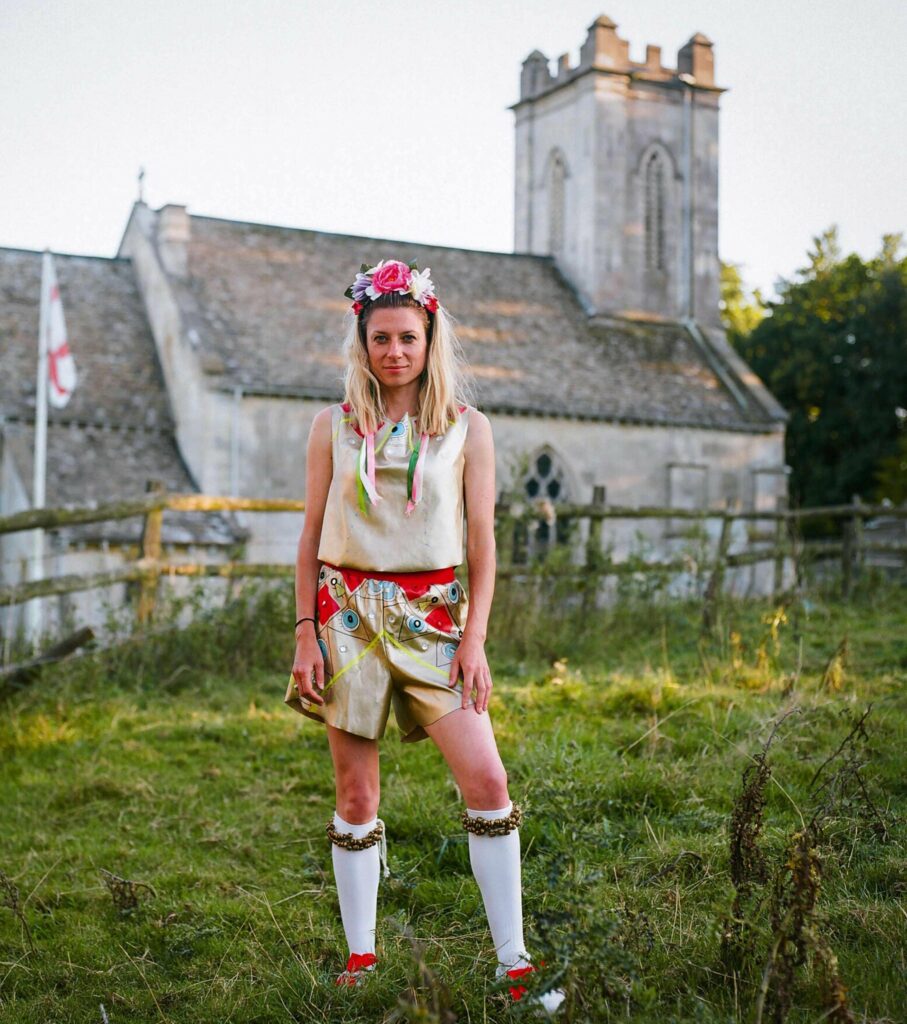
PEOPLE
The Morris renaissance
It’s as English as scones and cream, but Morris dancing was at risk of becoming marginalised. Now, as the folk tradition experiences a rural revival among the young, radical and stylish, photographer Rachel Adams meets those bringing Morris out of the past
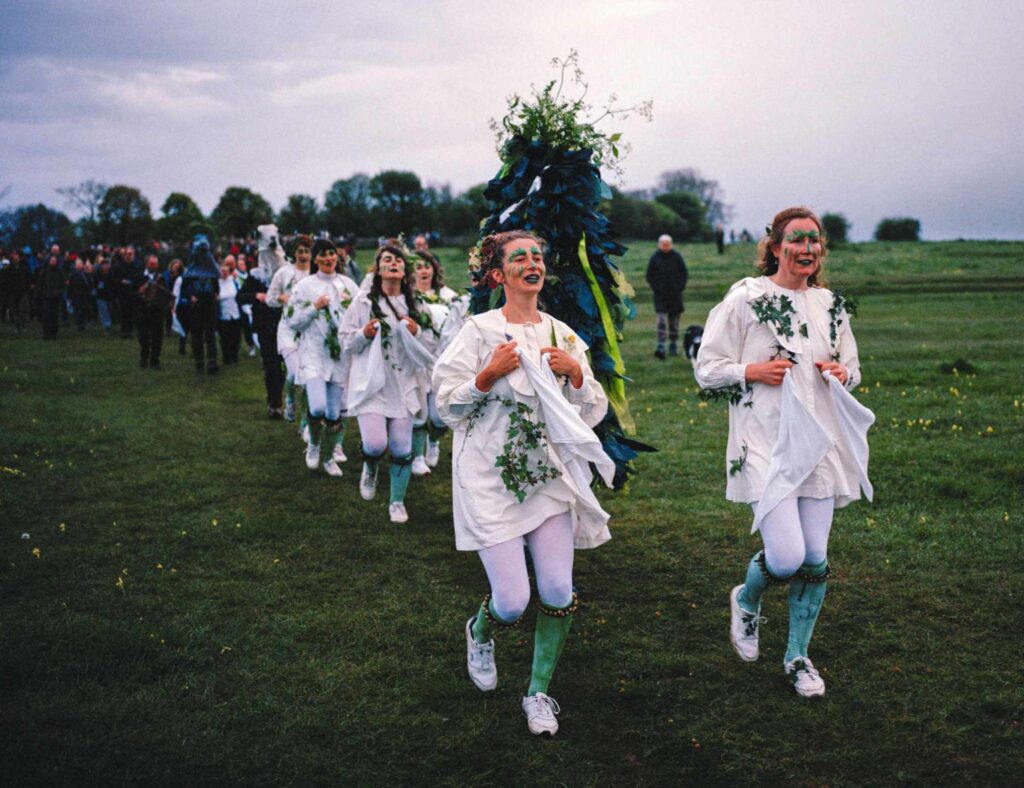
It’s 4.30am and I’m circling a hairpin bend, looking for somewhere to park. I’m in deepest Gloucestershire, awake much earlier than usual in search of an event I hope is worthwhile. As I pull into a pitchblack car park, so does another car. Two men get out. I can’t see them, but I hear bells jingling, quiet voices and a dog barking in a nearby campervan. I realise the film I’ve brought will be useless if the sun doesn’t cut through the heavy mist in time for the event I’ve driven from London to photograph.
I’ve come to watch a new iteration of an old tradition – Morris dancers welcoming in the summer at dawn on 1 May. As more people arrive, including conservationists eager to point out the ground-nesting skylarks and yellow cowslips, it’s clear the turn-out will be far larger than expected. By daybreak, 400 people have made their way through the half-light to watch two local sides, Boss Morris and Miserden Morris, dance their way across Rodborough Common near Stroud.
“I’ve always loved the idea of Morris, seeing the dancers as keepers of some ancient rite”
Although Morris has been part of May Day festivities for centuries, it’s the first time these sides (the name for a Morris group) have invited their social media followers to join them in celebrating the English countryside’s magical transformation from wintry grey to vibrant green.
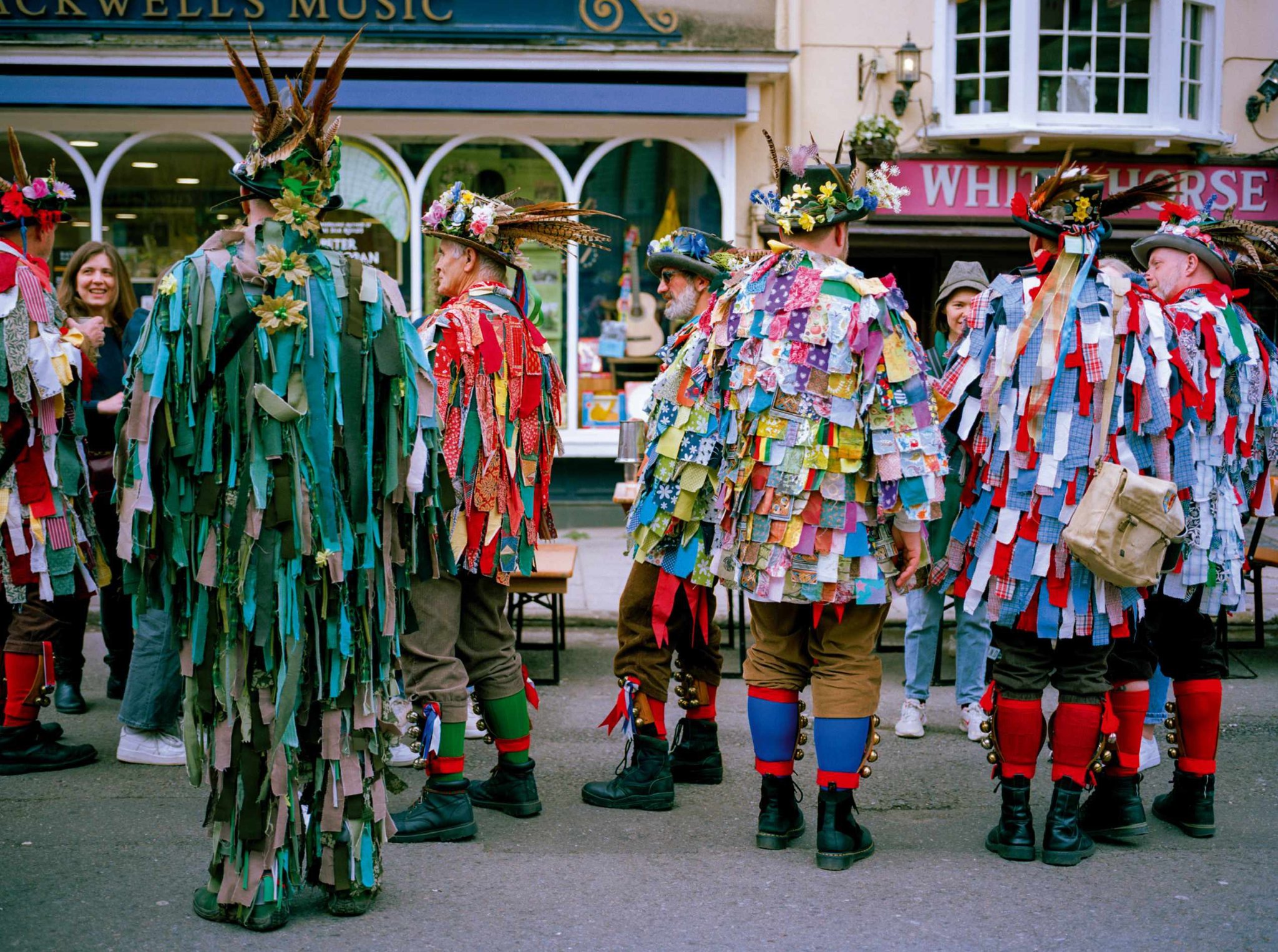
A PHOTOGRAPHER’S EYE
As a photographer, I’m endlessly fascinated by people – what we do, why we do it, and in particular how creativity thrives when cultures are pushed to the margins and collide. I’ve always loved the idea of Morris dancing, seeing the dancers as keepers of some ancient rite, indifferent to modern fads and fashion, and relishing, just as much as I do, the changing seasons and any excuse to spend the long summer evenings outdoors. When I moved to Dorset in 2014, I enjoyed finding that mixture of ancient and modern, rural and urban in the myriad folk festivals in towns and villages, with pubs and streets that buzz with trad music sessions, cider louts, ‘rural disco’, and of course, dozens of Morris sides.
But while there were plenty of Morris folk to photograph, I didn’t see many that would persuade editors to publish my work or persuade the public away from their preconceptions of Morris dancing, as an eccentric and out-of-date curiosity.
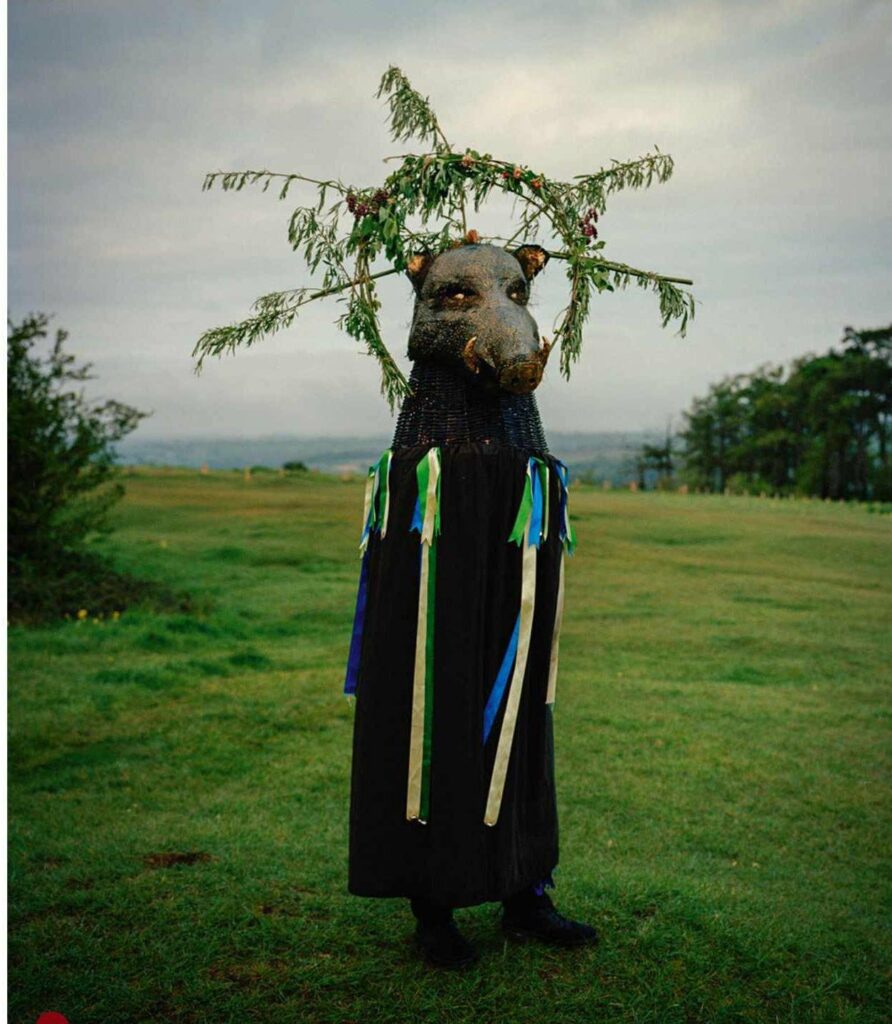
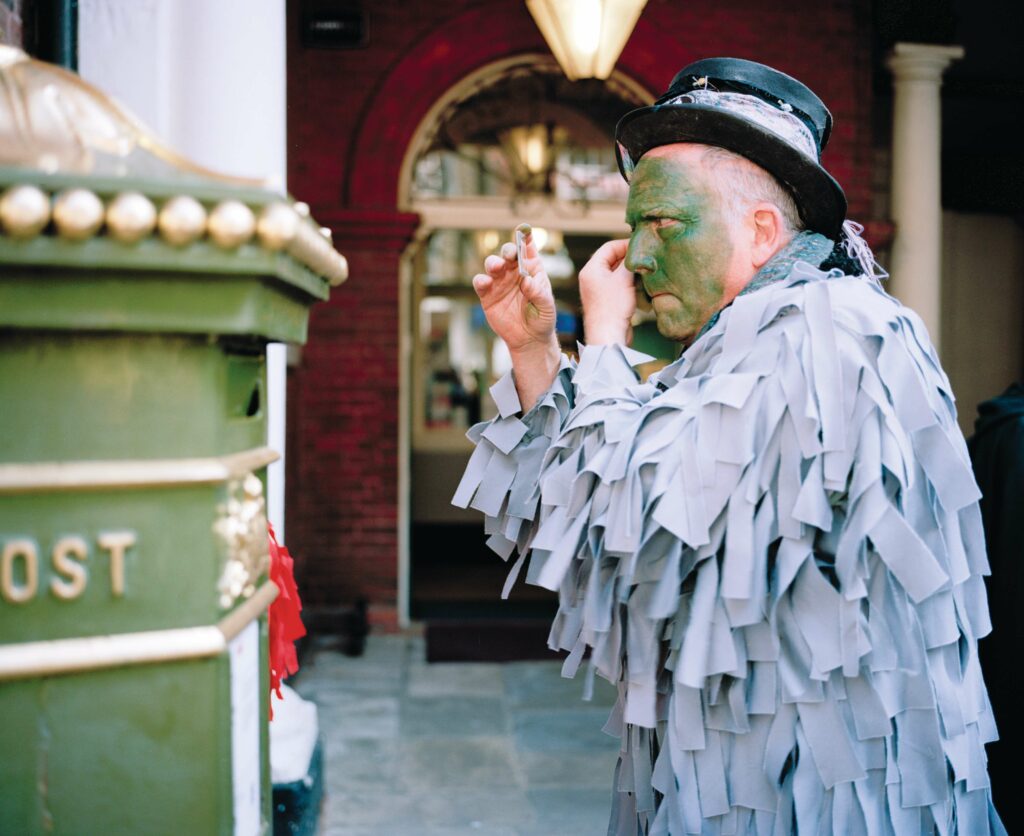
ROYAL BEGINNINGS
Historical records show that Morris arrived in England from Europe in the 1400s. An exotic dance for the royal courts, it spread throughout England, before waning in and out of favour as politics, taste and customs changed.
In the 1900s, revivalist Cecil Sharp’s mission to collect rural song and dance brought Morris back into the public consciousness. His ideas promoted folk culture as part of a romanticised vision of rural Englishness – perpetually in danger of disappearing unless captured and preserved by heroic gatekeepers of tradition.
In the 20th century, those mainly male gatekeepers took hold of Morris altogether, stopping women from taking part until feminism and the folk revival of the 1970s when women staked their claim on the Morris world. (Although the Morris Ring, one of the UK’s three organisational bodies, only allowed women to join in 2018.)
Now there are 13,600 dancers around the UK, in single-sex, mixed and LGBTQ+ sides – all amateurs but keeping the genre alive, and some with exciting new takes on the tradition.
You may have seen Boss Morris recently – perhaps in Tate Liverpool’s ‘Radical Landscapes’ exhibition, performing with award-winning bands on the Brit Awards, or in the recent Channel 4 series The Change. The all-female ‘prog’ side from Stroud are artists with a shared passion for bringing Morris to more people, and are regularly booked to appear at festivals, events and in music videos. Founding member Rhia Davenport says for Boss, Morris is “an artistic outlet. We work on it as an artistic collective. It’s something unto itself – fluid and organic and ambiguous. Going traditional in our costume wasn’t ever something that we contemplated, or made a conscious step away from necessarily; it was the opportunity to conjure and create that obsessed us right from the start.”
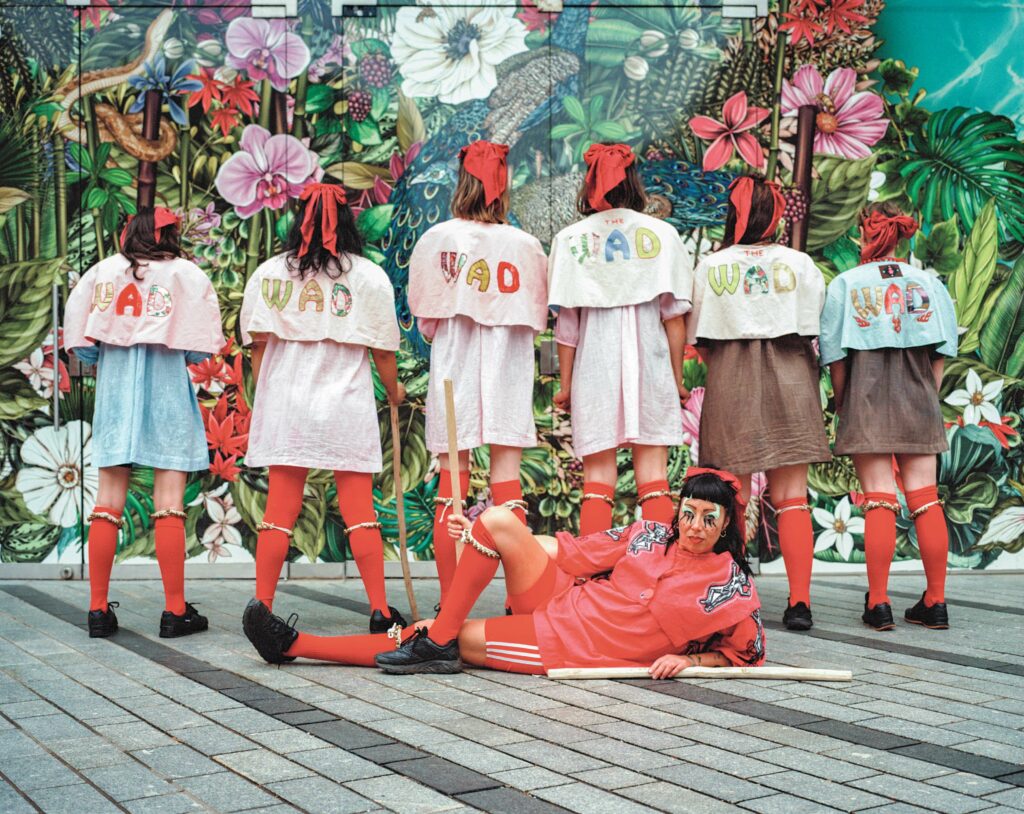
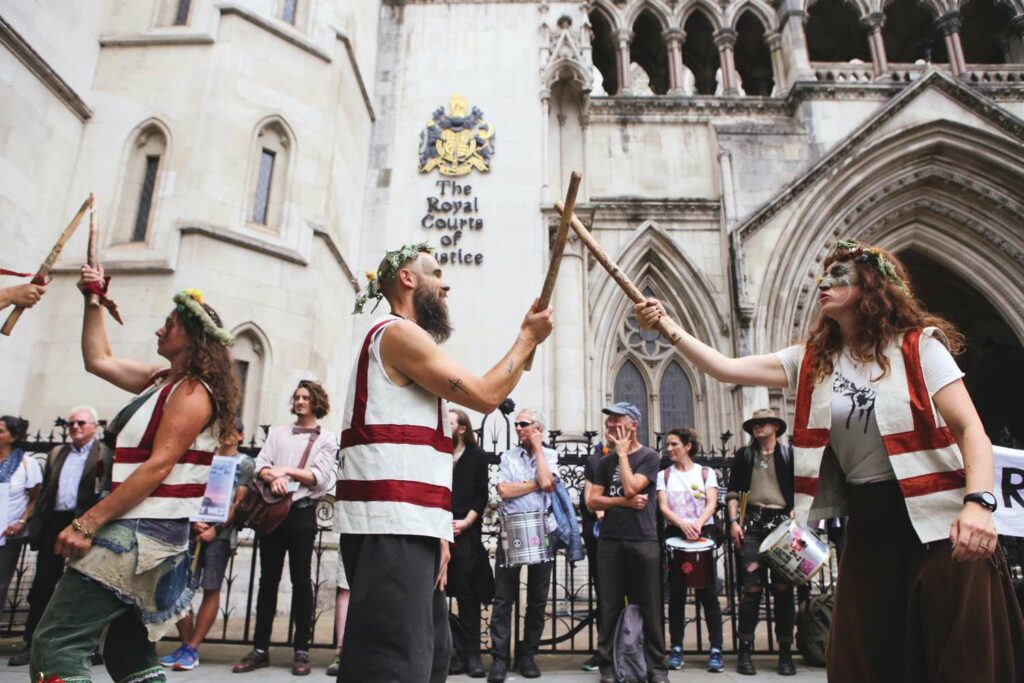
SERVING THE COUNTRYSIDE
Besides the artists and makers finding inspiration in Morris, there’s a political side to the art form, too. MAYDAY Morris formed late in 2022 as an offshoot of a popular Devonbased Border side (a style of Morris that orginated in the Welsh border counties of Herefordshire, Gloucestershire and Shropshire), with the intention of dancing at protests up and down the country. Choosing the humble dandelion as a symbol of “resilience, playfulness, health and hope”, MAYDAY’s face paint is inspired by anti-facial-recognition designs, and their jackets by high-vis tabards worn by labourers and stewards.
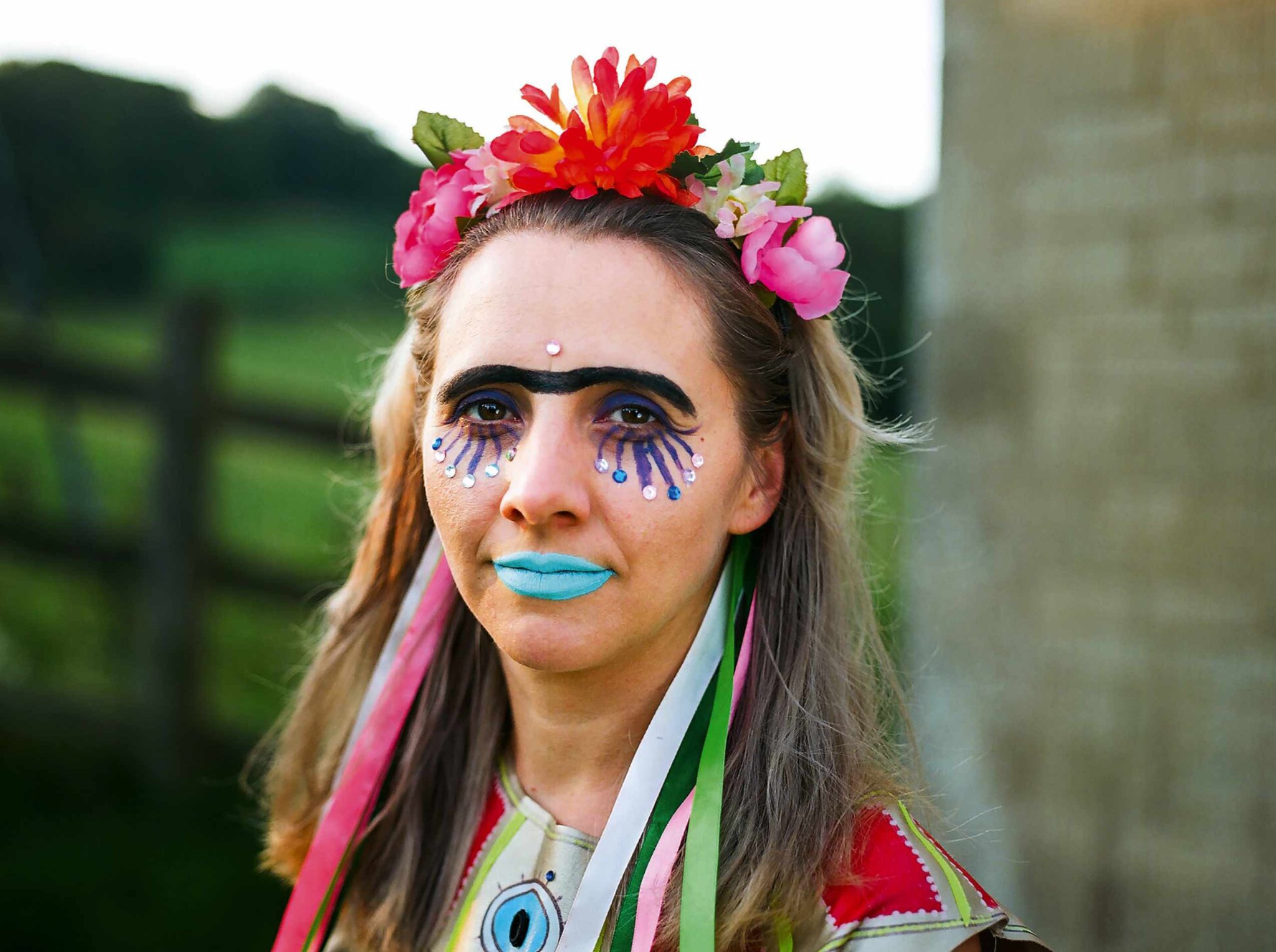
MAYDAY member Hawthorn tells me the side’s aim is to “‘re-enchant’ people with the beauty and wonder of our land, and with the folk traditions that come from this land, as a route towards honouring each other and our natural world. It’s a beautiful thing to rediscover and reclaim British traditions in service to the regeneration of our land and to those fighting for social and environmental justice,” she says.
Kate Merry, founder of Cornwall-based side The WAD, is keen to blend traditional Cornish folklore with ‘90s pop culture. Kate explains: “While I’m interested in the traditional danceouts and the music involved in the Morris scene, we have visions of taking it somewhere more original – using more contemporary folklore, costumes and ritual references. I’m part of the MTV generation that grew up watching Janet Jackson, Usher and Destiny’s Child. The youth of today could turn on TikTok and see the most incredible dancers doing insane moves from their bedrooms. Morris dancing, though steeped in tradition, could seem aesthetically quite ‘slow’ by today’s standards,” she adds.
“It’s a beautiful thing to reclaim British traditions in service to those fighting for social justice”
“We aim to make it more vibrant and appealing by referencing more contemporary dances, music and fashions that we feel are just as valid in terms of what constitutes ‘folk’.”
MORE INFO
• Find out more about the following Morris sides, plus performance dates, on their websites.
bossmorris.com; jointhewad.com; miserdenmorris.com
• Go to The Morris Federation’s website to learn more about the history of the dance and its many styles. morrisfed.org.uk

Rachel Adams is a London-based photographer whose clients include the National Trust, The Times and The Guardian. Some of her Morris images were included in Portrait of Britain Vol 1 (2018).